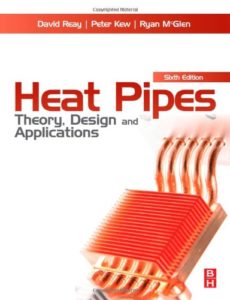Heat Pipes Theory, Design and Applications
Heat Pipes Theory, Design and Applications
Heat Pipes Theory, Design and Applications 6th Edition, takes a highly practical approach to the design and selection of heat pipes, making it an essential guide for practicing engineers and an ideal text for postgraduate students.
This new edition has been revised to include new information on the underlying theory of heat pipes and heat transfer, and features fully updated applications, new data sections, and updated chapters on design and electronics cooling. The book is a useful reference for those with experience and an accessible introduction for those approaching the topic for the first time. Contains all information required to design and manufacture a heat pipe Suitable for use as a professional reference and graduate text Revised with greater coverage of key electronic cooling applications.
You can also Read Oil and Gas Pipelines and Piping Systems. Design, Construction, Management, and Inspection
Heat Pipes Theory, Design and Applications
- Content:
![Heat Pipes Theory, Design and Applications]()
- Front-matter
- Copyright,
- Dedication,
- Preface to sixth edition,
- Preface to first edition,
- Acknowledgements,
- Nomenclature,
- Introduction,
- Historical development,
- Heat transfer and fluid flow theory,
- Heat pipe components and materials,
- Design guide,
- Heat pipe manufacture and testing,
- Special types of heat pipe,
- Applications of the heat pipe,
- Cooling of electronic components,
- 1 – Working fluid properties,
- 2 – Thermal conductivity of heat pipe container and wick materials,
- 3 – A selection of heat-pipe-related web sites,
- 4 – Conversion factors,
- Index
The heat pipe is similar in some respects to the thermosyphon and it is helpful to describe the operation of the latter before discussing the heat pipe. The thermosyphon shown in Fig. I.1(a). A small quantity of water is placed in a tube from which the air is then evacuated and the tube sealed. The lower end of the tube is heated causing the liquid to vaporise and the vapour to move to the cold end of the tube where it is condensed.


Comments are closed.